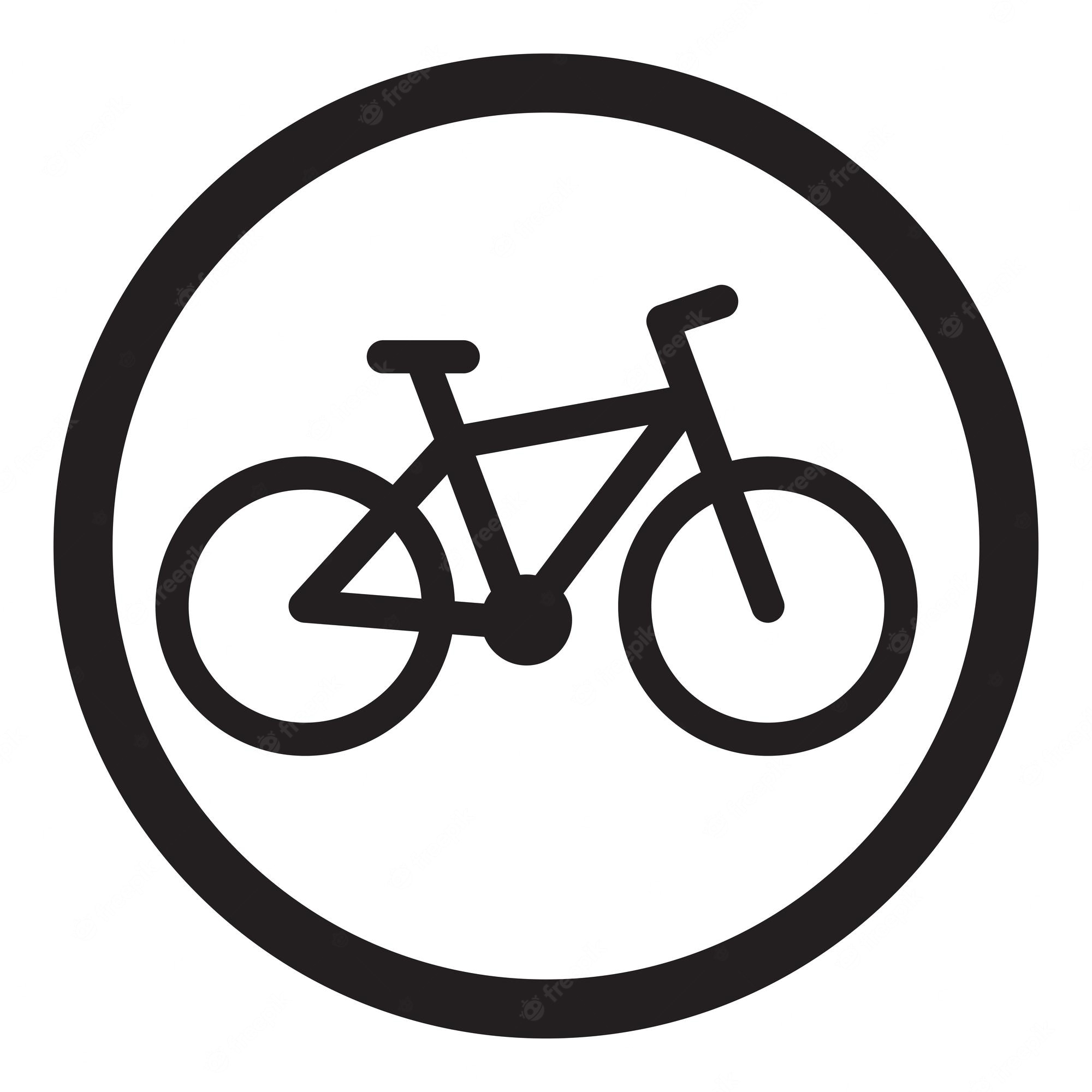Today I did my first 20 mile (33km) ride on my hardtail XC bike. I learned how to ride a bike about 1.5 months ago, but I’ve been riding pretty consistently since I learned. I ride exclusively in the city, it’s a very walkable city, but the paths aren’t always the best. I did 33km in 2 hours 53 minutes, not including breaks for water or to eat.
I see people saying that 10MP/H (16KM/H) average is a good average to shoot for, but i can’t even get my average above 7.1MPH (11.5KM/H), even on shorter rides. What am I doing wrong here? How are people going so freaking fast on bikes in cities?
I’ve been thinking about your post as I was biking to work this morning. I see others have talked to you about tires in the meantime but for on road riding I can really recommend pretty slick tires even on a mountain bike they will make a huge difference in resistance, especially if you inflate them as hard as they can take(look on the side of te tire for something that says inflate to xx psi). Hard smooth tires run nearly as good as racing tubes.
Another thing I was thinking about is saddle height. Most new cyclists put their saddle way too low, which is understandable as you want to be able to put your foot on the ground when you lose balance. However that is not the best thing for transferring muscle power to your pedals. I found that for good force you want to have your saddle so high that when you sit on it and you put a foot on the pedal at it’s lowest point, with your foot parallel to the ground, your leg is fully stretched.
This does mean that to put a foot on the ground you have to keep your other foot on the pedal and slide forward off the saddle. The posture of your leg for pedalling will be way better getting more power to the bike and reducing stress on the knees.
Make sure your foot rests on the pedal with the front part, like you can see bike racers do. That allows for more muscles to work on pushing than when the pedal is under the middle of the foot.
Beware that raising the saddle does change the front-back balance a bit as your weight sits higher.
I read you bike down stairs, if it is only one or two steps that is not going to change much but if it’s a full flight of stairs that might be a problem.
Frankly I’m 52 years old and have been riding bikes since I was 3 and I have not ridden off more than a couple of steps at a time for the last four decades, it’s just not something I wish to inflict on my bike, nor on myself. Hopping down half a meter while at speed is no problem, but really riding of flights of stairs? You are a braver man than me.
I agree on the saddle height. It’s important to have it high enough so you can push efficiently.
About the tires, I don’t agree 100%. Higher pressure might give you slightly better rolling resistance but will give you way more vibrations and shocks which makes you tired in the long run. I can poste a page of a book explaining this better if you like. In general it’s important to have smooth tires (usually high thread cound and good quality rubber) for a low rolling resistance.
Hmm I hadn’t thought about the shocks on hard tires bbeing so tiring though that does make sense. It does make a serious difference in resistance though, main downside for me of hard tires is less grip, both because of a smaller contact area with the ground and because an uneven roard makes you bounce more. I suppose it’s a matter of adapting to circumstances. I do lower pressure for soft or smippery roads a tiny bit sometimes.
Gearing, tires, and geometry make all the difference in the world.
My Transition Sentinel is only geared for mountain biking. It’s a terrible city bike. Tons of shock, high torque gears for steep hills, cannot go very fast. But it’s insane when you need to climb or descend mountains. It has knobby, 2.4in tires.
My city bike is an ebike, and even though it’s a single speed, it’s pretty comfortable going between 10-30mph on that gear alone. The battery allows me to haul lots of groceries or baggage (and climb steep hills), and it’s tires are wide enough to not get stuck in tram rails or gaps in the concrete road. I have knobby tires to avoid popping tires, but smoother, thinner tires will be more efficient.
Edit: if you have a shock, try locking it out if it has lockout.
I’d also recommend checking out city bikes, such as road, gravel, and upright bikes. There’s an incredible amount of diversity, and a downhill mountain bike is about as far from a road bike as one can get. One can roll over a rock the size of a watermelon, the other can coast for meters off of a pedal stroke. Ebikes also are phenomenal as car replacements (or even just as car offsets), but generally cost $1,500+ with tariffs.
Besides purpose built bikes for speed and distance, swapping out tires for a different tread can make a large difference. If you aren’t doingactualy technical trails and just like road or flat gravel you can get a tire that has some nubs on the outer sides but a smooth patch down the center for way less resistance when riding. When I switch to my winter tires the bikes is so much slower
Could you possibly recommend what sort of tires these would be? I occasionally go down gravel trails but no jumps or logs or anything like that, just like dirt trails. Would those still be okay on these tires?
I run Michelin Country Rock as a hybrid tire. Anything that’s not knobbly is going to be a huge upgrade on pavement.
You also don’t need to run the same tires on both wheels. Having a slicker tire in the back can make sense as you put more weight on it, and slipping with the back wheel is a nuisance, while slipping with the front is often a disaster. So you could start off just swapping the rear. That way if it doesn’t work out, you also spent only half the money :)
Lastly I’d want to share that I really disliked those wheels that are knobbly along the edges. Leaning over when taking a curve at speed, and suddenly transitioning from smooth to vibrating was very unsettling to me.
If most of your riding is on paved surfaces, you want “city bike tires.” For your bike, they’ll be roughly 26x1.5"-2.0" and they’ll be relatively smooth instead of knobby. Better ones will have features like extra puncture resistance and retroreflective sidewalls.
Random example from an image search:

The “some nubs on the outer sides but a smooth patch down the center” type of tire the commenter above recommended would look something like this…

…but honestly, I’d probably go for a full-blown city tire instead unless you’re regularly riding on loose surfaces, not just “occasionally.”
It’s already been stated plenty, but less than 2 months and you are going 20 miles? Absolutely wild. You do you bro, you’ve certainly got yourself figured out better than we do. Mad respect.
Thank you! I guess a slow 20 miles is better than a fast 5 miles being my max :)
The more you ride, the faster you get, generally speaking.
Mountain bikes are not primarily made for speed, for what it’s worth. You’ll find the fastest speed in road bikes (actually time trial bikes, but these are not made for general riding).
hardtail XC bike
This might be part of your answer. Modern mountain bikes aren’t nearly as good on the road as vintage ones were.
However, don’t replace your bike before you check your technique. Did you get a professional fit when you got your bike? If not, did you talk with anyone experienced about setting up a bike for a comfortable riding position? Bikes do NOT come out of the box or out of the aisle set up well for most people, and it’s not always intuitive what the best position for you might be without experience.
Average speed is going to be highest when you can maintain pace. Straight, flat paths with few stops. Are you able to find a stretch of, say, 2 miles that has few to no deviations or stops? Including curves - if you have to slow down and then accelerate again, that’s inefficient and will tire you out.
How’s your tire pressure? Rolling resistance is greatly affected by tire pressure.
Gears? Are you able to pedal at your most comfortable speed of pedal rotation at a maintainable pace?
I’m by no means a pro - I’m also old and overweight, but 10 mph average over a long ride comes very easily when I compensate for those factors.
With all advice given: don’t worry about speed… everyone goes their own speed and it’s all the right speed. We’re all different and I’d focus on what is comfortable and fun for you. The more hou enjoy it, the more you’ll do it.
Don’t worry about speed. Speed is a practically worthless metric, especially when you’re starting out.
Your focus should be on developing a sustainable cadence: the frequency of your pedal strokes, and the pressure you exert on the pedals. It’s a balancing act. For a given output, the faster you pedal, the less pressure you need to put on the pedals. Speed up or slow down from your ideal cadence, and you just wear yourself out without improving your speed.
I looked to maintain about 65-75 strokes per minute, and not pushing so hard that my thighs would start to burn. Some people prefer slower and harder; some prefer faster and lighter.
The purpose of shifting is to maintain consistent stroke rate and pedal pressure. Speed is incidental: if your cadence is good, whatever speed you get will also be good.
City riding is slow.
Pump up your tyres.
Go at whatever speed you like.
Will I get a dented rim or a popped tire if I go down stairs at 50-55PSI? The tire is rated to 65.
You learned how to ride a bike a month and a half ago and you’re already talking about going down stairs? I’m not gonna tell you you’re wrong, but I will say that’s pretty damn adventurous!
I’d suggest getting some more experience so you develop some feel for how different tire pressures work (and more importantly, how shifting your weight forwards and backwards works and other bike-control stuff like that) before trying that. But then again, I’ve been riding since I was a kid and I still shy away from stairs so what do I know?
I’ve gone down stairs, but only the kind that are sort of long (as in three stairs, but the space between the stairs is long as opposed to the three stairs being one after the other. It is pretty scary as I have trouble getting over the back wheel (maybe my saddle is too wide?The reviews I read about the bike said the saddle that came with it was terrible, so I’ve been riding on this saddle).

Looks like the seatpost may be backwards, so you might be sitting closer to the handlebars and bottom bracket than you should be. Can you give us a picture from another angle, note from behind and lower?
I put the bike together myself out of the box, so that’s certainly possible.

Yeah, you should remove the saddle and turn that thing around, then re-attach the saddle pretty much level. I would not want to spend more than half an hour sitting on that setup. You may be able to simply loosen the nut and turn the part that is currently clamping the seat post 180 degrees to the front, no need to remove the saddle from the clamp.
Rule of thumb is this: If you turn the pedals to a horizontal position (let’s say the left one facing forward), the part of the leg just below your kneecap should be pretty much perpendicular to the pedal’s axis. If your saddle is too far forward or backward, you will not be able to pedal efficiently. It’s probably part of the reason why you cannot go very fast since you’re unable to use the leverage of the crank arms that way.
About saddle height: If your saddle height is correct, you can turn one pedal to its lowest point and place your heel on it. If your leg is then just slightly bent (shouldn’t be straight, but not a significant angle either), you’re probably pretty spot on.
As an avid cyclist, I can say that those are just pretty good rules of thumb. With my experience as a rider, pretty minor adjustments make a big difference and I tweak new bikes or parts as I go based on how it feels. I also learned from bad experience (knee and achilles heel problems from too high a saddle, for instance), so what I wrote above is a good starting point for you until you start getting a feel for such things with more kilometers under your belt. Welcome to the club, champ!
I have trouble getting over the back wheel (maybe my saddle is too wide?)
I think it’s more likely your saddle is too high or your handlebar reach is too long.
No. Those issues will more likely be caused by smashing the wheels into a curb or stairs going up them and not using your weight over the bike to help the wheels up. A hard impact like that can cause a pinch flat if you are running tubes of possibly damage the rims too depending on the severity of the hit.
Tyre pressures really do depend on what type of riding you will be doing and your terrain.
50-55 is good for trying to stop pinch flats if you are running tubes and for running around on pavements and the like keeping your speed up by trying to have less deformation in the tyre to make your rolling resistance marginally less.
Conversely if you are riding off road then you want less pressure as that helps the tyre deform more, increasing the amount of tyre that is in contact with the ground at once and there by increasing your grip levels.
Damage like that is more dependant on the way you ride your bike and tackle obstacles as no amount of pressure is going to protect your rims in your just plough through objects. If I’m riding on tarmac with my MTB then I’ll usually add a bit more pressure but only up to about 30psi (this is tubeless though bear in mind) and stair sets are not an issue.
Got it! I put the rear tire to 55PSI and the front tire to 50PSI. Would making the suspension softer in the front further prevent possible damage?
Not really. Going down stairs you shouldn’t have much weight over the front and the suspension won’t be doing that much work until you get to the bottom where it will compress as you hit the flat. If anything if you went too soft you could hit the bottom of the stair set and bottom out the forks which opens up another can of worms.
If the suspension is working fine for you right now I’d leave it as it is.
As long as you deweight the back wheel as you go down the stairs you’ll be fine.
What does that even mean?
When you go down stairs you want your weight backwards over the rear wheel which is gonna add more weight to the back wheel. To “deweight” the rear wheel you’d need to lean forward which is only going to end in pain going down a stair set.
edit are you referring to going up curbs as opposed to downstairs? In which case this would be relevant?
Correct. You want most of your weight over the front wheel because if you’re over the back wheel you bounce harder and you’ll get a lovely snake bite pinch flat for your troubles. You aren’t going to be completely over the front wheel just a little bit to get the back wheel lighter since you have no rear suspension.
I ride enduro on a hardtail mtb. I used to get the dreaded snake bites until i learned how to ride stairsets.
⚠️ Dangerous advice. As others are saying, this is a recipe for going over your handlebars and getting yourself hurt. Check out some “how to mountain bike”videos.
ERM what? “Most of your weight over the front wheel” I’m sorry but this is just blatently wrong and goes against the physics of what is happening. If most of your weight is over the front wheel you are going over the bars.
Then you say you aren’t going to be completely over the front wheel, just a little. But you just said most of your weight.
What you are saying makes absolutely no sense and isn’t even consistent across your message.
This is bad advice that could get someone hurt man. Not cool.
I ride every day and down a set of stairs. If he wants more in depth info he can go watch a video.
What i’m saying makes sense if you’ve ridden any features that require you to deweight your back wheel. Most of your weight will be over the front wheel but you yourself will be mostly center on the bike. This isn’t rocket science. If he wants to gap the stairs (doubtful since he said he learned to ride a month ago) then i’d say lean back in preperation for a bunny hop but since he isn’t then the easiest thing he can do to not fuck up his bike is to lean forward a tiny bit as he descends. He’ll try it a few times and figure out where his balance point is since it’s different for everyone. until he figures it out he’ll probably pop a few tires.
Biking over features can get you hurt, if you only take advice from one internet stranger you’re asking for trouble anyways.
I’m also struggling to understand 😅
Don’t listen to him, he’s giving you a recipe for going over your front handlebars hard.
I see two big things that others have touched on. One, you wll not believe how much of a difference a real road bike makes in your speed once you have a chance to try one, and the average speeds you’re seeing are almost definitely on road bikes. I don’t think you need to go out and get one now or anything, get comfortable with what you have first, but also know that if/when you try one your average speed will probably jump at least 5km/h.
Second, cycling takes a lot of time to get used to. Anecdotally, when I first started I was a competitive distance runner and would occasionally win smaller races, and I started riding with a bunch of older relatively out of shape guys who had been cycling for decades. On about one sprint or hill a ride I could beat them, but they would kick my butt on the rest of the ride for more than a year before my conditioning caught up and I started to be able to keep up consistently.
I see two big things that others have touched on. One, you wll not believe how much of a difference a real road bike makes in your speed once you have a chance to try one, and the average speeds you’re seeing are almost definitely on road bikes.
I’d say it’s less the bike and more the tires. My “city bike” is a rigid mountain bike from the '90s (edit: which is also extra-heavy because of basket/rack/panniers/fenders), but because I put smooth-ish (but still wide) tires on it, I cruise at maybe 15-20 mph on flat ground. Sure, the handlebars/riding position and (in OP’s case) power losses from the front suspension make some difference, but not nearly as much as the tires until you get going really fast.
Hills absolutely destroy me even in the lowest gear, I feel like spinning the pedals that fast just wrecks my cardio for some reason.
This is my second season cycling. I live in an extremely hilly area and last season I got to where I could climb the steep hills without getting out and pushing about halfway through the season, but long and gradual hills absolutely murdered me. This season I started tackling some long gradual hills
Honestly you have to play with the gearing to find what works well for you on hills. Higher gears spin harder but put down more power, lower gears spin easier but put down less power. Best is to be in the highest gear you can sustain. Personally I never touch the lower half of my gears because there’s just too much leg spin and I tire myself for nothing.
Eventually you’ll get to where you can stand on the pedals while at a low cadence for extra power (useful on hills or with a trailer. When I have my kids behind me by butt basically never touches the saddle) but ultimately it’s something that takes building muscle and practice to get comfortable
Hehe, I’m a big guy and weigh about 100kg, on flat ground I’m on the highest gear nearly all the time because my legs are strong rather than agile, but up a relatively steep hill I need to go on the lower gears and crank myself up there.
Sounds like you were pretty out of shape. That won’t change in just six weeks. You should start seeing progress, though. If not, see a doctor and get checked out
It’s certainly possible that im just in bad shape, no arguments here :)


Just keep going and things will get better.
As an (ex currently post child…) mountain biker my threshold for having good endurance or not was being able to ride at pace for hours without sitting down. It takes a lot of fitness to do, but I found when you train like that it comes fairly quickly.
I say that because riding standing I found let’s you put more power down and also makes using minimum suspension comfortable as you use your knees instead. You need to find what works re bars and stem though as you can fuck your back up in the wrong position. To ride xc or full sus bikes off the trails I had a second set of wheels with smooth road tyres. Anything but road tyres will dramatically increase your rolling resistance on tarmac.
Reading the thread and your responses, I thought it might be useful for you to try some other bike types, like a trekking bike and a racing bike. Because you are pretty new to biking in general, this might expand your context window efficiently and effectively. I love the feel of ‘fast’ bikes because your muscle power gets you so much, giving me a little bit of that same feeling when windsurfing or sailing. I also like the versatility and confidence a mountain bike gives you, but it’s like it eats your speed when you’re not using it for rougher terrain. Had the same experience when paddling my grandma through the forest in an offroad wheelchair, getting back on the tarmac was actually _ worse_
1.5 months is also basically just starting out, no matter if you are fit or talented, it takes some km/hours to ‘attune’ or adapt or ‘get the feel’. Same with saddle discomfort/monkey butt. Your butt and the saddle take a lot of time to get used to each other, and more time will increase comfort. Your speed will improve with just time, I’m sure. Can we have a pick of your bike?? Have fun pedaling!
The MTB gives me more confidence that I won’t break something if I go down a curb too hard or somehow make a wrong move and go into a pothole.
My butt does hurt a bit, mostly because my underwear rides up uncomfortably as I ride, I occasionally have to stop and fix it 😅
Here’s a pic of my bike :)

See if you can turn the knob at the top of the front shock to lock it out, so that you don’t lose power from it compressing.
It does have a lockout. Does the shock give no benefits on rough sidewalks/pavement?
You can have better traction and comfort from using the shock or you can have better efficiency and speed from not having it absorb some of your pedaling force, but you can’t have both at the same time.
There’s a reason the only bikes you’ll find with suspension are MTBs, hybrids marketed to newbies who don’t know any better (sorry), and high-end e-cargo bikes that have excess power budget to spend on jostling the cargo less.
Also, keep in mind that your arms and legs (if you stand up on the pedals) act as shock absorbers, even if the bike itself is rigid. The tires and even the frame flex a little bit, too, and that’s basically considered good enough on paved surfaces up to and including cobblestone streets.
So the shocks don’t really keep anything from breaking, they’re purely for comfort.
That’s just always going to be a slow bike in the road. A big shock in the front is heavy, and very parasitic to your pedaling stroke. It will also lack the lower “speed” gears. It’s fine if it gives you more confidence but if you are going to commute seriously then I’d suggest getting a gravel bike, or at least a hybrid commuter at some point. Not now, but when you feel held back by that bike eventually.
I actually don’t commute at all, I just ride for fun, so going faster isn’t really a necessity, it’s just that I’d like to cover more distance in less time in order to save time on long rides.
You can go fast in that bike but it’s not really built for it. If you desire speed there are usually good deals on older street bikes. My 40 yr old miyata 910 weighs half of your MTB and that makes a big difference in acceleration and speed. I commuted with this bike for almost 20 years and got my average up to 50 kph. Would pass traffic between lights, it felt great being faster than cars.
I doubt the 50 average See this record here https://en.m.wikipedia.org/wiki/Hour_record
These attempts are in pretty specific circumstances (equipment, track and air residence, training and what not) and were about 50 just ten years ago (they are about 57 right now, but the development has been crazy)
So please excuse me if I slap a bit fat X for doubt on the 50 average.
I’m sorry but the average speed across all stages in the Tour de France is around 41km/h there is no way that you could average 50kp/h unless your route was entirely downhill. Even then if it was a commute you’d have to return up that hill which would then normalise your average.
The tour de France is very mountainous. 50 is 30 mph here and I averaged up sure. I’d bike with pros on the weekends and they would blow by me. But the space between lights were a sprint and I would overtake traffic each time.
Dude, I’m sure you were and hopefully still are a great and well trained cyclist, but it is very unlikely you averaged 50.
Rohan Dennis, Tour de France record holder for fastest stage in the Grand Tour, managed to break the previous UCI one hour record in an inside hall, on a flat plane and achieved 52.491 km:
https://www.theguardian.com/sport/2015/feb/09/rohan-dennis-sets-new-hour-record
If your average was 50, meaning you sometimes surpassed that, you should probably get back on that bike and claim the record.
Are traffic lights added to your average? On my commute I lose up to a third of time on red traffic lights.
A lot of the time, it’s pedestrian red lights while I’m waiting for the cross walk to open up
I think considering you started biking 1.5 months ago you are off to a great start! I think many people in your position would be unable to complete a 33KM trip, especially considering your practice is overwhelmingly city biking.
I of course am unaware of your previous physical shape, but assuming your body has not been trained to bike it will take you a while to get into shape.
My average is around 20-25km/h not including traffic stopping etc. It took me over three years to get here by biking to work daily, which is half uphill and half downhill (so I always have to bike uphill somewhat) and whenever I started feeling comfortable with my speed, pushing harder until uncomfortable again.
Some tips I learned in this experience and some I got from others:
-
Your muscles will get good and more efficient the more you use them. To avoid becoming complacent in your speed in the city for instance, consider every opportunity to push yourself.
-
Never going to make that green light anyway? Not today, try to make it as if your life depends on it. If you don’t and have to break hard (you won’t at first) remember you did it to be able to do it in a year if bot today.
-
Similarly racing plublic transport (where safe) can be fun as well as good training.
-
Isn’t it nice biking in the wind shadow of this e-bike? Fuck e-bikes(cheaters(JK)), try to always pass them (great interval training) (the slow ones anyway, in my city some are capped at 20kmh and go more like 15)
-
Nutrition: I noticed after a year or so that certain breakfast items made it easier or harder to push myself biking
-
I don’t know if you are EU or NA, but if EU or similar consider biking places that are relatively nearby, but you usually drive. This way you get new experience and slightly longer trips than you are used too which always ‘stretches’ you a bit more, then you ‘snap back into place’ a bit better that where you started.
Thanks for the advice! I’m in Europe :)
What I’m afraid of is pushing myself so hard that I have to go home early :( I like biking long distances which makes me afraid to push myself too hard, which would (possibly?) severely cut my distance capabilities.
Unfortunately, I have no car :(. Most ebikes on the road by me are ridden by couriers and they’re just speeding along the road way going 2-3x the speed of me - they’re quite popular here.
A lot of the times I push myself to pick up speed so I can coast for a while after, though this is probably counterintuitive in a way.
Depends if you ride for commute (as in you need to get from point A to B) or for recreation (bike for couple of hours)
If it’s recreation it’s fine to cut down on distance and tire yourself out. Treat it like gym training. If you aren’t tired, it wasn’t good training. Maybe plan a shorter trip but a more intense one.
I found that after couple of months of daily commuting my speeds improved and I could finally go up that steep hill without stopping.
Good luck and stay safe!
-
Another thing to review is your riding position and bike fit.
You’ll notice people on road bikes will have their bodies very horizontal which allows them to put more power in to the pedal strokes. At the other end of the spectrum you have a kind of Dutch riding position where the body is straight up. This will be inherently slower just because it’s more relaxed.

On an XC bike in the city you are probably somewhere in the middle of those positions, i would guess.
Then it is good to make sure you have your saddle at the right height so you are able to use all your leverage. If it is too low then you’ll be pushing more with your knees and you’ll need to spend more effort to move the bike. You want your leg to be almost but not fully straight when you have the pedal at its lowest position.
I agree with the other comment that if you’re already doing those kinds of distances, if you keep riding then your “bike fitness” will come together quickly.
My position is generally 45° or even more bent over - I was considering getting a fork extension so my sitting position would be more comfortable, is this recommended or should I just keep riding the way it is?
I set my saddle height using the following method - when pedaling with your heels, your knee should be pretty much locked out. Is this a decent method for finding the correct saddle height?
The frame size is correct for my height.
OK great, that sounds pretty good for your saddle height then! Easiest way to change your riding position from there is with your stem and handlebars, I wouldn’t mess with the fork itself.
If you want to be more upright you can try a stem that’s shorter and has some rise to it, to bring the bars higher and closer to you. There’s all kinds of different handlebars that have rise to raise your riding position as well. Bike shop can advise on that if it’s something you aren’t comfortable doing yourself.
But to be honest 45° is a fine angle, so unless you’re finding it really uncomfortable or it’s hurting your hands or wrists, I’d say your bike fit is probably OK!
The first few rides my wrists hurt, but that seems to have gone away.
I’ll just leave it the way it is then! More money saved :D
I have no idea what you mean by fork extension but I presume you mean raising the front end up a bit. In the picture you posted in another reply it looks like your handlebars are on upside down to me. You have a load of stem spaces increasing the height but then your handle bars appear to point downwards.
I may be wrong because of the angle of the photo or maybe they were intended to be like that (no idea why but still) but I’d be interested in seeing a few pictures from a few other angles. If they are upsidedown then it is a fairly easy fix and may improve you riding position considerably without buying anything else.
I meant a stem extension, didn’t know how it was called :D
In terms of the handlebars, should they be angled down on the ends, or up?
Here’s a picture

I put the bike together myself after I ordered it, so it’s certainly possible I put them on upside down 😅😂
No worries man, i know you are new and there is a shit ton of different terminology to deal with with bikes, a longer stem makes more sense to me now :D
Generally speaking handle bars are made with different amounts of rise to lift the bars upwards as you can see here on my bike which has a lot more rise than you -

It isn’t unsafe or anything like that to mount them the other way up I just can’t say I have seen it done before and obviously this will change your position on the bike and comfort levels more than you would think, even mm in difference in all things like handle bars, stems, seat position etc can make drastic differences to comfort, especially over long distances.
Are the bars entirely straight across from left to right? Most bars usually also have different amounts of sweep which is the degrees that the bars go back and up as you can see here on mine -

They aren’t entirely straight and that sweep should be towards you rather than away.
One post you said your hands / wrists ached for a bit. Whilst this is normal as you aren’t used to riding a bike it can also be due to bar positioning as you could be adding extra force at points where you don’t want it due to a combination of how your bars are positioned and how you use them, beyond this sometimes this can result in numbness in the hands too which obviously you don’t want.
“Bike fit” which incorporates everything from handle bars to stem length to seat position, tilt and height can all have a lot more drastic impacts on your body than you’d think even through small adjustments and is something you should tinker with to try and find the best position for you. You can pay to have one done professionally but it would probably cost more than your bike is worth to begin with so at this point I’d avoid that.
I would be inclined to adjust your handlebars so that the rise is facing upwards, if you have any sweep have it so the ends of the bars are closer to you than the center rather than further away before you start buying new stems and things like that as they are all things you can do for free.
If you change it and don’t like it you can always switch it back to how you have it now, it looks weird to me but it isn’t like it is dangerous and your comfort is more important than how it looks.
I have spent the last year tweaking my current bike trying to get it in the perfect place so it definitely takes some time. Make small adjustments, go for a longer ride and then assess how you feel. I realise it will be harder for you not know bikes in general as well due to being new but you can still tell what is and isn’t comfortable and if you are getting any pain in places like knees and wrists.
Good luck with this new journey and enjoy it!
Thank you so much for all the advice! You were absolutely right about my bars being upside down -_- my sweep was facing downwards because for some reason, I thought that was correct. I adjusted them so that the sweep is sort of at a 45° angle facing me, so it’s equal parts up and forward. I can’t wait to try it out and see if this improves everything!
In terms of bike fitting: I don’t even know where I would find one or how much they cost here, but I feel like the bike fits me pretty well (or I’m too young, 28, to realize that it doesn’t fit me and I’m just adapting in a bad way). I do have some back problems, but the bike isn’t agitating them at all, so it might be okay.










